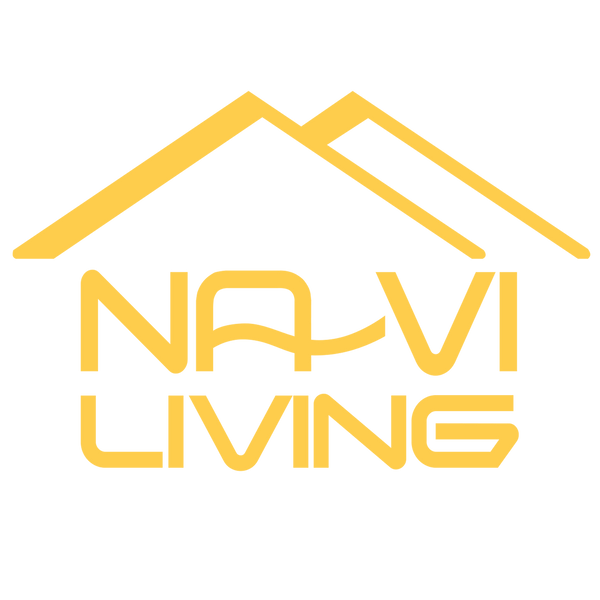How to Buy a House With Low Income, it might sound out of reach, but it’s more achievable than you think. With the right strategies, government-backed programs, and financial tools, low- and moderate-income buyers can absolutely become homeowners.
This guide walks you through the key steps, options, and support systems available to help you buy a house with low income and turn your dream into a real address.
- How to Buy a House: A Step by Step Guide for First Time Homebuyers
- Mortgage Pre Approval in Canada: Everything You Need to Know to Secure Your Home Loan
- Build to Rent vs Buy to Let: What Newcomers Should Know
Can You Buy a House With Low Income?

Buying a House With Low Income – Is It Possible?
Buying a house with low income is absolutely possible, even though it may seem daunting at first. The key to success lies in embracing a mindset shift and understanding the financial realities involved. Many people who once thought homeownership was out of reach have proven that with determination, planning, and the right resources, it can be achieved.
Mindset Shift
The first step is changing how you think about your financial situation. Instead of viewing low income as a barrier, see it as a starting point for strategic planning. This mindset shift encourages you to focus on what you can control—such as improving your credit score, reducing debts, and seeking out assistance programs designed for buyers like you. It’s about moving from a place of limitation to one of opportunity.
Adopting a long-term perspective is also essential. Homeownership is not just about the upfront costs; it’s an investment in your future. Over time, paying a mortgage builds equity and can provide financial stability that renting cannot. This shift in thinking helps you stay motivated and focused on your goal.
Financial Reality
While mindset is important, understanding your financial reality is equally crucial. This means taking a clear-eyed look at your income, expenses, debts, and credit profile. Many low-income buyers start by creating a detailed budget and identifying areas where they can save. Even small amounts saved consistently can add up to a meaningful down payment.
Improving your credit score can open doors to better loan terms and lower interest rates. This might involve paying down high-interest debts, disputing errors on your credit report, or establishing a history of on-time payments.
Another important aspect is exploring the variety of mortgage programs and assistance options available. Government-backed loans like FHA, USDA, and VA loans often have lower credit score requirements and smaller down payment options. Additionally, many states and local governments offer grants, down payment assistance, and homebuyer education programs tailored to low-income buyers.
Real-Life Examples
Countless individuals and families have successfully purchased homes on low incomes. For example, a single mother in a metropolitan area used a combination of an FHA loan and a local down payment assistance program to buy a modest home. She improved her credit score by paying off small debts and attended homebuyer workshops to understand the process better.
Another example is a couple who pooled their incomes and resources, worked extra hours, and chose a home in an emerging neighborhood where prices were more affordable. Their story highlights how creativity and perseverance can overcome financial challenges.
These stories show that with the right approach, buying a house with low income is not just a dream but a tangible goal.
What Counts as Low Income When Buying a Home?
Federal Definitions vs. Local Context
Understanding what “low income” means is essential because it determines your eligibility for many homebuying programs. The federal government, through the Department of Housing and Urban Development (HUD), defines low income based on the Area Median Income (AMI) for your region. Generally, households earning 80% or less of the AMI are considered low income. However, this classification is not one-size-fits-all.
Local context plays a huge role. The cost of living and typical incomes vary dramatically from one area to another. For instance, 80% of the AMI in a rural town might be $40,000, while in a large city it could be $80,000 or more. This means that what qualifies as low income in one place might be considered moderate or even high income elsewhere.
Because of this, it’s important to look at your specific region’s AMI figures when assessing your eligibility for loans and assistance. Many states and municipalities adjust their programs to reflect these local income levels, ensuring that help goes to those who need it most.
What Is AMI (Area Median Income)?
AMI is the midpoint income in a particular geographic area—half of the households earn more, and half earn less. HUD calculates AMI annually for every county and metropolitan area in the United States. This figure serves as a benchmark for determining income limits for various housing programs.
Knowing your area’s AMI helps you understand where you stand relative to your community’s economic landscape. It also helps lenders and housing agencies decide which programs you qualify for, based on your income as a percentage of AMI.
Why This Matters for Loan and Assistance Eligibility
Many affordable housing initiatives and mortgage programs use AMI-based income limits to target their assistance. For example, some down payment assistance programs are only available to households earning 80% or less of AMI. USDA loans focus on rural areas and require applicants to meet income limits tied to the local AMI. Even some conventional loan programs, like Fannie Mae’s HomeReady, have income caps based on AMI.
Understanding these thresholds helps you identify which programs you can apply for and avoid wasting time on those that are out of reach. It also allows you to plan your finances accordingly, perhaps by increasing your income or reducing debts to qualify.
How Much Income Do I Need to Buy a House?

Understanding Debt-to-Income Ratio (DTI)
When lenders evaluate how much house you can afford, one of the most important metrics they use is the Debt-to-Income Ratio (DTI). This ratio compares your total monthly debt payments to your gross monthly income, helping lenders assess your ability to manage monthly mortgage payments alongside other financial obligations.
How is DTI calculated?
Lenders add up your recurring monthly debts such as car loans, student loans, credit card minimum payments, and any other fixed obligations and then divide that total by your gross monthly income (income before taxes and deductions). The result is expressed as a percentage.
For example, if your monthly debts total $1,500 and your gross monthly income is $5,000, your DTI would be 30%.
What’s an acceptable DTI range?
Most lenders prefer a DTI of 36% or less, with some flexibility up to 43%, and occasionally higher for certain loan programs. This means your total monthly debts, including your prospective mortgage payment, should ideally not exceed about 36% to 43% of your gross income. Staying within this range improves your chances of loan approval and helps ensure your monthly housing costs remain manageable.
Understanding and managing your DTI is crucial because it directly impacts the size of the mortgage you can qualify for. A lower DTI means you have more income available to cover mortgage payments, property taxes, insurance, and other housing-related expenses.
Income vs. Housing Market Prices
The amount of income needed to buy a house varies widely depending on where you want to buy. Location plays a critical role in housing affordability because home prices differ significantly across cities, neighborhoods, and regions.
In high-cost areas, such as major metropolitan centers, the income required to afford even a modest home can be substantially higher than in more affordable markets. Conversely, in smaller towns or rural areas, lower home prices mean you may qualify for a mortgage with a more modest income.
To get a realistic picture of how your income stacks up against local housing prices, you can use online tools like Zillow’s Affordability Calculator or Redfin’s Home Affordability Calculator. These tools allow you to input your income, monthly debts, down payment amount, and other expenses such as property taxes and homeowners insurance. They then estimate how much house you can afford based on current market conditions, interest rates, and your financial profile.
By using these calculators, you can:
- Understand the price range of homes you can realistically consider in your desired location.
- Adjust your home search based on your budget constraints.
- Explore how changes in interest rates or down payment size affect your purchasing power.
Ultimately, combining an understanding of your DTI with local housing market data helps you set a practical homebuying budget and avoid overextending financially.
Home Buying Assistance Programs
What Programs Help Low-Income Families Buy Homes?
Low-income families have access to a variety of federal, state, and local programs designed to make homeownership more attainable. At the federal level, programs like the FHA loan, Community Development Block Grant (CDBG), and HOME Investment Partnerships Program provide crucial support. These programs often offer lower down payment requirements, reduced interest rates, or grants that subsidize parts of the home purchase process.
State and local housing finance agencies (HFAs) also administer mortgage assistance programs tailored to their communities’ needs. These can include down payment assistance, subsidized interest rates, and homebuyer education courses.
In addition to government programs, charities and nonprofit organizations play a significant role in helping low-income buyers. Groups such as Habitat for Humanity provide affordable homes and financial counseling, while local nonprofits may offer grants or loans to cover closing costs or down payments. These organizations often work in partnership with public agencies to maximize resources for homebuyers.
Down Payment Assistance Programs
One of the biggest hurdles for low-income buyers is saving enough for a down payment. Down payment assistance (DPA) programs help bridge this gap through grants, forgivable loans, or deferred payment loans that reduce or eliminate upfront costs.
- Grants are funds given to buyers that do not need to be repaid, making them highly valuable for those with limited savings.
- Forgivable loans are loans that are forgiven after a certain period, usually if the buyer remains in the home and meets program requirements.
- Some programs offer deferred loans, which do not require repayment until the home is sold or refinanced.
Who qualifies? Eligibility typically depends on income limits tied to the Area Median Income (AMI), first-time homebuyer status, and sometimes the location of the property. Many programs target households earning 80% or less of the AMI, but this can vary by program and region. Pre-purchase counseling is often required to ensure buyers understand the responsibilities of homeownership.
Affordable Housing Programs You Should Know
Several specialized programs provide targeted assistance for low-income buyers:
- Section 8 Homeownership Voucher Program: This program allows eligible low-income families who receive Section 8 rental assistance to use their vouchers toward mortgage payments instead of rent. It helps families transition from renting to owning, often with supportive counseling and education.
- USDA Direct Loans: Offered by the U.S. Department of Agriculture, these loans are designed for rural and suburban homebuyers with low to moderate incomes. USDA Direct Loans provide low-interest mortgages with no down payment requirement, making homeownership accessible in eligible areas.
Together, these programs form a network of support that can help low-income families overcome financial barriers to buying a home. By exploring federal, state, local, and nonprofit resources, prospective buyers can find assistance tailored to their unique circumstances and increase their chances of successful homeownership.
Government-Backed Loans for Low-Income Buyers

What Is FHA?
The Federal Housing Administration (FHA) loan is a mortgage program insured by the federal government designed to make homeownership more accessible, especially for low- to moderate-income buyers and those with less-than-perfect credit histories. Unlike conventional loans, FHA loans have more flexible qualification criteria, which can be a lifeline for buyers who might otherwise struggle to secure financing.
The FHA itself does not lend money; instead, it provides insurance to approved lenders, protecting them against losses if the borrower defaults. This insurance reduces the lender’s risk and encourages them to offer loans with lower down payments and more lenient credit requirements.
Who qualifies and benefits?
FHA loans are particularly beneficial for first-time homebuyers, individuals with limited savings for a down payment, and those with credit challenges such as past bankruptcies or foreclosures. Because FHA loans allow lower credit scores and smaller down payments, they open the door for many who might be excluded from conventional financing. However, the home purchased with an FHA loan must be the borrower’s primary residence, and the property must meet certain safety and habitability standards set by FHA appraisers.
How to Qualify for an FHA Loan
Qualifying for an FHA loan involves meeting several key requirements that balance accessibility with responsible lending:
- Credit Score: Borrowers with a credit score of 580 or higher can qualify for the low down payment option of 3.5%. Those with credit scores between 500 and 579 may still qualify but will need to put down at least 10%. While FHA loans are more forgiving, a higher credit score can improve your chances of approval and secure better interest rates.
- Down Payment: The down payment can be as low as 3.5% of the purchase price, which is significantly lower than the typical 10-20% required by conventional loans. Importantly, this down payment can come from personal savings, gifts from family members, or qualified down payment assistance programs, making it easier to gather the necessary funds.
- Debt-to-Income (DTI) Ratio: FHA guidelines generally recommend a DTI ratio of 43% or less, but lenders may allow higher ratios if other compensating factors, such as strong credit history or significant savings, are present. This flexibility helps buyers with existing debts still qualify for a mortgage.
- Property Requirements: The home must be the borrower’s primary residence and meet FHA appraisal standards to ensure it is safe, structurally sound, and livable.
- Mortgage Insurance: FHA loans require an upfront mortgage insurance premium (MIP) paid at closing and ongoing annual MIP payments. While this adds to the monthly cost, it is part of what enables lenders to offer loans with lower down payments and more flexible credit requirements.
What Is USDA Loan?
The United States Department of Agriculture (USDA) loan is a government-backed mortgage program aimed at expanding homeownership opportunities in rural and some suburban areas. It is specifically designed for low- to moderate-income buyers who want to purchase homes in eligible locations.
One of the most attractive features of USDA loans is the 0% down payment requirement, meaning buyers can finance 100% of the home’s purchase price without needing to save for a down payment. This can be a game-changer for buyers with limited upfront funds.
Eligibility criteria include:
- Location: The property must be located in a USDA-designated rural or suburban area. USDA maintains an up-to-date list of eligible areas, which typically include smaller towns and communities outside major metropolitan centers.
- Income Limits: Household income must not exceed 115% of the Area Median Income (AMI) for the area, ensuring the program targets those who need assistance most.
- Credit and DTI: While USDA loans generally require a minimum credit score of around 620 to 640, exceptions can sometimes be made based on compensating factors. The debt-to-income ratio is typically capped at 41%, but lenders may allow flexibility depending on the borrower’s overall financial picture.
- Primary Residence: Like FHA loans, USDA loans are only available for primary residences.
Unlike FHA loans, USDA loans do not require traditional mortgage insurance but do charge an upfront guarantee fee and an annual fee, which are usually lower than FHA’s mortgage insurance premiums.
FHA vs USDA: Which Is Better for Low-Income Buyers?
Both FHA and USDA loans provide valuable options for low-income buyers, but they serve different needs and situations. Understanding their differences can help you decide which program fits your circumstances best.
|
Feature |
FHA Loan |
USDA Loan |
|
Income Limits |
No specific income limits; flexible |
Must not exceed 115% of Area Median Income (AMI) |
|
Location |
Available nationwide, no geographic restriction |
Restricted to USDA-designated rural and suburban areas |
|
Down Payment |
Minimum 3.5% (with credit score 580+) |
0% down payment required |
|
Credit Score |
Minimum 580 for 3.5% down; 500–579 requires 10% down |
Typically 620–640 minimum, with some exceptions |
|
Debt-to-Income Ratio |
Generally up to 43%, sometimes higher with compensating factors |
Typically up to 41%, some flexibility possible |
|
Mortgage Insurance |
Upfront and annual mortgage insurance premiums (MIP) required |
No traditional mortgage insurance; upfront guarantee fee and annual fee apply |
|
Property Requirements |
Primary residence; must meet FHA appraisal standards |
Primary residence; must be in USDA-eligible area |
|
Best For |
Buyers in urban or suburban areas with lower credit scores or limited down payment |
Buyers in rural/suburban areas with limited savings and moderate incomes |
Choosing the right loan depends on your specific situation:
- If you live in an eligible rural or suburban area and want to avoid a down payment, the USDA loan is an excellent option.
- If you have a lower credit score or are purchasing in an urban or non-USDA-eligible area, an FHA loan may be more suitable.
Both programs offer pathways to affordable homeownership for low-income buyers, and exploring both options with a knowledgeable lender can help you find the best fit for your financial goals and living preferences.
Strategies for Purchasing a Home With a Low Income

Boost Your Credit Score Before You Apply
Improving your credit score is one of the most effective ways to increase your chances of qualifying for a mortgage and securing better interest rates. Start by checking your credit report for errors and disputing any inaccuracies. Pay down high-interest debts, especially credit cards, and make all payments on time to build a positive payment history. Avoid opening new credit accounts before applying for a loan, as this can temporarily lower your score. Even modest improvements in your credit score can reduce your monthly mortgage payments and expand your loan options, making homeownership more affordable.
Get Pre-Approved to Know Your Budget
Getting pre-approved by a lender before you start house hunting gives you a clear understanding of how much you can borrow and what your monthly payments might look like. Pre-approval shows sellers you are a serious buyer with financing in place, which can strengthen your negotiating position. It also helps you focus your search on homes within your budget, saving time and reducing frustration. During pre-approval, lenders review your income, credit, debts, and assets, providing a realistic picture of your buying power and helping you avoid falling in love with homes you can’t afford.
Find a Low-Income-Friendly Lender
Not all lenders are equally familiar with or supportive of low-income buyers. Look for credit unions, community banks, or housing agencies that specialize in serving first-time or low-income homebuyers. These lenders often offer more flexible underwriting criteria, lower fees, or access to special loan programs like FHA, USDA, or local down payment assistance. Working with a lender who understands your financial situation and the resources available can make the process smoother and increase your chances of loan approval.
Consider Buying With Family or Friends
Co-buying a home with family members or close friends can be a powerful strategy to pool incomes, share costs, and qualify for a larger mortgage. This approach can make homeownership possible when buying alone is financially out of reach. However, co-buying also comes with challenges: all parties share legal and financial responsibility, so clear agreements about ownership shares, payment obligations, and exit strategies are essential. It’s important to communicate openly and consider consulting a real estate attorney to draft co-ownership agreements that protect everyone involved.
Look Into Fixer-Uppers or Foreclosures
Homes that need repairs or are in foreclosure often sell at lower prices, offering an opportunity to buy below market value. If you have the time, skills, or budget to invest in renovations, a fixer-upper can be a smart way to enter the market affordably. Keep in mind that these properties may require additional inspections and could have hidden costs, so it’s crucial to budget carefully and work with a knowledgeable real estate agent. Foreclosures can also be competitive, but with patience and flexibility such as being willing to compromise on cosmetic features or closing timelines you can find a home that fits your budget without sacrificing your key needs.
How to Get a Mortgage With Low Income

Documents You’ll Need
When applying for a mortgage with a low income, being organized and prepared with the right documents is essential. Lenders require proof of your financial situation to assess your ability to repay the loan. Key documents include:
- Income proof: Recent pay stubs, W-2 forms, or tax returns if you’re self-employed. These verify your steady income stream.
- Bank statements: Typically covering the last two to three months, showing your savings, checking accounts, and any other assets.
- Identification: Valid government-issued ID such as a driver’s license or passport.
- Additional documents: May include proof of other income sources like child support or government benefits, and documentation of any debts or monthly obligations.
Having these documents ready speeds up the mortgage application process and demonstrates your preparedness to lenders.
What Lenders Look for (Besides Income)
While income is a critical factor, lenders evaluate several other aspects to determine your mortgage eligibility:
- Employment history: Lenders prefer stable employment, usually looking for at least two years in the same job or field. Consistent work history signals reliability and steady income.
- Assets: Savings, investments, or other assets can strengthen your application by showing you have reserves to cover down payments, closing costs, and emergencies.
- Credit score: A higher credit score improves your chances of approval and better loan terms. Some low-income loan programs accept lower scores, but lenders still want to see responsible credit management.
- Debt-to-Income (DTI) ratio: Lenders calculate your DTI to ensure your monthly debts including the proposed mortgage don’t exceed a manageable percentage of your income. Generally, lenders prefer a DTI below 43%, though some programs allow higher ratios with compensating factors.
- Loan type and program eligibility: Different loans have varying requirements. For example, FHA loans are more flexible on credit and DTI, while conventional loans often require stronger financial profiles.
Conclusion
Buying a house with low income is entirely possible when you have the right tools, knowledge, and support. By understanding your financial situation, exploring available assistance programs, and working with the right lenders, you can confidently navigate the path to homeownership. Start with a free consultation, explore your loan options, and take the first confident step toward making your homeownership dream a reality.




